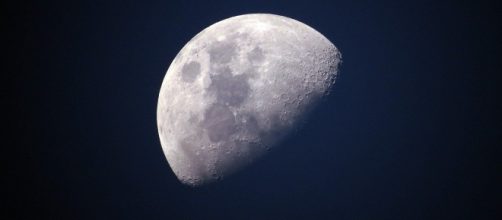The space debris described as a rogue rocket is racing towards the Moon. Initially, it was presumed to be a part of a SpaceX rocket. However, its identity is now established. It is a booster from a Chinese spacecraft sent to the Moon in 2014. It would crash into the Moon on March 4. In February 2015, America sent a weather and Earth observation satellite into orbit. It was a part of an exercise for the U.S. National Oceanic and Atmospheric Administration.
The individual who detected the debris thought it was a part of the SpaceX rocket. The news of a SpaceX booster crashing into the Moon made headlines.
On subsequent checking with NASA, he corrected his version. The piece of space debris does not have any link to SpaceX, but has links to China. Space used to be a domain where a few countries played major roles. Today there are multiple players with a consequent increase in space debris from various sources.
Daily Mail UK says a professor at Arizona State University revealed to a media outlet that the weight of the debris was about four tons, and it was racing to the Moon at a speed of nearly 5,700 miles per hour. Once it strikes the surface of the Moon, it creates a crater of about 65 feet in diameter.
Background of the space debris set to crash on the Moon
The Catalina Sky Survey noticed the debris floating in space.
That was in March 2015. It had gone past the Moon two days after SpaceX DSCOVR. Hence, it was presumed to be a part of the SpaceX rocket. It is not easy to put an identification tag on space junk floating around, and it involves substantial "'detective work."
Daily Mail UK adds that a subsequent investigation established the origin of the junk. It belonged to China and was a part of the experimental spacecraft Chang'e 5-T1 launched in October 2014. It was in connection with preparatory work prior to lunch of the official Chang'e 5 mission in 2020.
The Chinese Lunar Exploration Program was meant to bring back samples of Moon rock. It was a success, and China became the third country to achieve the feat after the United States and the Soviet Union.
In February 2020, China undertook the Chang'e-4 mission to gather data from the far side of the Moon. Missions of this nature rely heavily on Artificial Intelligence, robotics and renewable energy.
A dead rocket on the Moon a better option than entry into the Earth's atmosphere
The initial news of links with SpaceX did cause a stir. Elon Musk's company said it is a better option for a dead rocket to end up on the Moon instead of passing through the Earth's atmosphere. This is because the metal turns into oxide particles as it re-enters. That is not environmentally friendly. Daily Mail UK mentions a couple of SpaceX Starlink satellites that came down recently during a geomagnetic storm. These are disintegrating over Puerto Rico.
A heavyweight booster set to crash into the Moon
An asteroid-hunter is monitoring the path of the 4-tonne booster that could strike the Moon on March 4. Its movement is erratic and it could land on the far side. The impact would make another crater. The first-ever man made artifact to touch the Moon was the Soviet Luna 2 in 1959. It happened two years after the launch of Sputnik-1, the first artificial Earth satellite. There have been missions that went wrong and left behind space debris on the Moon. One was of the Israeli lander in 2019. It carried a secret cargo of dried tardigrades. These are tiny creatures with the ability to revive in the presence of water. Moreover, there are decayed natural parts of rockets and space-related material that fall out of orbit. The Moon ends up as the final resting place for some of these items.


